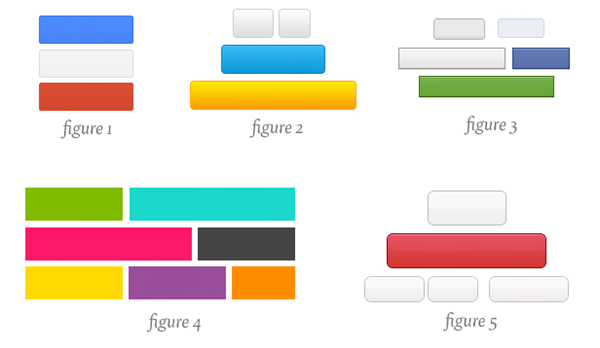Sometimes the most important aspects of brand experience happen below the level of our consciousness. Think of the sound that is made when you close the door of your car. Manufacturers spend millions researching, designing and engineering that experience. Same with the exhaust note of a Harley Davidson. All of this careful thinking and planning has been crafted to heighten and differentiate your experience of a PARTICULAR brand.
This approach should also be applied to the digital domain.
Over the last dozen years or so, I have built a number of online platforms for clients or employers. Each time, I have focused on designing not just a “user interface” but an on-brand experience. And this process begins, surprisingly, with buttons.
Marc Hemeon, designer at YouTube, eloquently connects the use of web buttons with brand experience. He proposes “the button test” – and sets a surprisingly easy challenge. Can you pick the brands that use the style and colour of the buttons shown in the image? I bet you can. But more than that … can you pick the call to action, the behaviour and your sense of intention that is connected to that button? That’s the important and interesting part!
When I am thinking through and planning a digital platform, I focus on user behaviour and intention. I plan for interaction and process but I also take a leaf out of Amazon’s books. I plan for trademarking. Imagine coming up with a single button that brands an experience, explains a process and corresponds with an inherent behaviour. It’s the digital equivalent of a “Kleenex” – where the act of using a tissue has become synonymous with the company that produces the product. Amazon’s 1-click purchase button is the prime example.
As Marc’s button test shows, the smallest element on your website delivers brand impact. Maybe we should pay more attention to the digital brand experience rather than just making the logo bigger.


